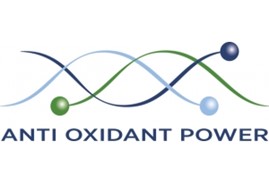Antioxidant Cell Efficacy Tests by Anti Oxidant Power (AOP)
22 November 2023
Anti Oxidant Power (AOP) offers an innovative approach for evaluating the in vitro efficacy of cellular antioxidant activity of natural extracts, ingredients, or finished products, for different cosmetic applications.
Using a patented technology, reactive oxygen species (ROS) are generated in controlled quantities inside the cell, which can be scavenged by the test product. Dose-response studies carried out on different cell models allow the determination of effective concentrations (EC50, EC10, EC90) of the antioxidant activity of various pure compounds / crude extracts / fractions, as well as their comparison with standard antioxidants.
The combination of AOP functional tests, addressing several antioxidant mechanisms (direct by scavenging free radicals, or indirect by activation of the transcriptional pathway ARE-Nrf2) also makes it possible to investigate the cellular mode of action and to establish a complete antioxidant profile of the products evaluated.
AOP tests are applicable to various cell models:
1) Keratinocytes (HaCaT or primary cells) or other cellular models such as skin fibroblasts, allow the evaluation of the efficacy of the antioxidant activity of skin care products, claiming for example antioxidant activity, anti-radical activity, anti-aging, anti-pollution, anti-blue light or skin photo-protection activities.
Fig.1. SKIN AOP1 test principle performed on HaCaT keratinocytes and dose-response curves, efficacy concentration at 50% (EC50) and coefficient of determination (R2) for quercetin, epigallocatechin gallate and resveratrol.
2) Primary cells from the dermal papilla of the hair follicle (HFDPCs), located at the base of the hair follicle. HFDPCs are involved in modulating the development and growth of the follicle (whereas the hair shaft produced consists only of keratin). The cells of the dermal papilla, subjected to oxidative stress caused by cellular metabolism or by the environment (solar radiation, urban pollution …), lead to various alterations in the growth cycle of the follicle, which can lead to hair loss. HFDPCs make possible an in vitro evaluation of the antioxidant, anti-radical, anti-aging, anti-pollution properties of new hair treatments or hair care products.

Fig.2. HAIR AOP1 test performed on Hair Follicle Dermal Papilla Cells and dose-response curves, 50% efficacy concentration (EC50) and coefficient of determination (R2) for resveratrol.
In short:
– “SKIN” cell tests (keratinocytes or fibroblasts)
- SKIN AOP1: intracellular antioxidant activity (neutralization of ROS produced inside the cell)
- SKIN AOP2: indirect antioxidant activity (induction of the gene transcription pathway for antioxidant enzymes or proteins in response to oxidative stress) (available only on HaCat immortalized keratinocytes)
- SKIN AOP3: antioxidant activity (neutralization of ROS produced at the plasma membrane)
- SKIN AOP CAT: catalase-type antioxidant activity (inactivation of H O2)
- SKIN AOP POL: anti-pollution activity (neutralization of ROS produced after exposure to urban dust)
- SKIN AOP BLUE : anti-blue light activity (neutralization of ROS products blue light application)
– ” HAIR” cell tests (HFDPCs):
- HAIR AOP1: intracellular antioxidant activity (neutralization of intracellular ROS)
- HAIR AOP3: antioxidant activity (neutralization of ROS at the plasma membrane)
- HAIR AOP CAT: catalase-type antioxidant activity (inactivation of H2O2)
- HAIR AOP POL : anti-pollution activity (neutralization of ROS produced after exposure to urban dust)
More information on the AOP1 test published in: Antioxidants https://doi.org/10.3390/antiox9060471
Fig.3. Anti Oxidant Power (AOP) EFFICACY LIVE CELL ASSAYS – CATALOGUE – 2022
- All assays are available for compounds, extracts, finished products.
- Related claims: antioxidant/ anti free radical activity, anti-aging, prevents lipid peroxidation, protects against oxidative stress, activates defence against ROS, protects against air pollution, protects against blue light effects
- All studies include a full report (material and methods, comparison with standard antioxidants, samples ranking, data analysis) along with monographs for all samples (antioxidant indices, dose-effect curves, efficacy concentrations EC50, EC10, EC90, CI 95%).
- All experiments made on triplicates in a dose-response mode (9 concentrations) and replicated in order to find the right concentration range if needed, all assays (but AOP3) include a cytotoxicity assessment.
- Graphs illustrating main results are presented in a communication flyer mode.
- Adaptation to alternative cell model if not available in our cell line bank (all assays but AOP2)
- Coming soon: measure of anti UV (A & B) effects
* AOP patented technology
** Hair Follicle Dermal Papilla Cells
*publirédactionnel
CONTACT
Cécile Dufour
PhD










 Follow us on Linkedin!
Follow us on Linkedin!
You must be logged in to post a comment.